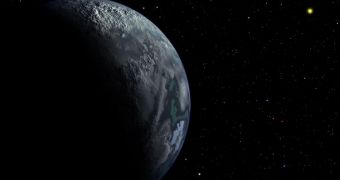According to the conclusions of a new study conducted by experts at the Harvard-Smithsonian Center for Astrophysics (CfA), it would appear that extrasolar planets ejected from their original star systems can be captured in orbit around other stars; and this is not a rare occurrence.
Researchers indicate that millions of planets within the Milk Way alone may be in this situation. All of these worlds formed in different star systems than the ones they are currently inhabiting, and were flung out from their previous homes for a variety of reasons.
Their parent stars, for example, may have interacted with other stellar objects, and the gravitational tug-of-war may have ejected one or more of the planets into deep space. Alternatively, interactions between gas giants within a star system are known to be strong enough to eject one of the worlds.
After being cast away, these planets spend eons traveling through space, not orbiting any star. Unless they are set on a course that throws them directly out of the galaxy, they have a fairly large chance of coming across another star system, experts say.
This hypothesis goes a long way towards explaining some of the most peculiar orbits that astronomers observed exoplanets take around various stars. The idea also allows experts to account for the very existence of a double-planet system.
“Stars trade planets just like baseball teams trade players,” CfA expert Hagai Perets explains. Details of the new investigation were published in the April 20 issue of the esteemed Astrophysical Journal. The work was coauthored by Thijs Kouwenhoven, from the Peking University, in China,
In a series of computer simulations the two devised, they focused on what goes on inside young star clusters, where exoplanets float freely. If the number of rogue worlds making their way through the cluster is equal to the number of stars, then around 3 to 6 percent of the latter would capture worlds.
This investigation also has some interesting implications for our own solar system. “There's no evidence that the Sun captured a planet. We can rule out large planets. But there's a non-zero chance that a small world might lurk on the fringes of our solar system,” Perets says.
The area beyond the Kuiper Belt, all the way to the outer edges of the Oort Cloud, is very large, and may easily contain a planet that has thus far eluded detection. However, the chances of that having happened are fairly slim.

 14 DAY TRIAL //
14 DAY TRIAL //